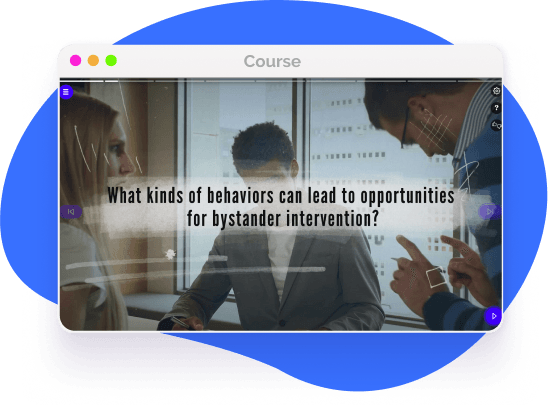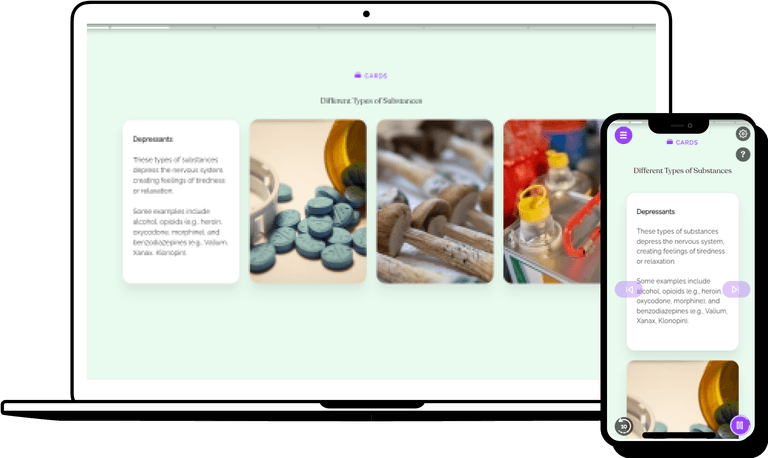What is Bystander Intervention?
Bystander intervention can be an effective tool in creating a positive work environment by making the workplace safer and more inclusive. To be a bystander means to watch something happen without getting involved. Bystander intervention is when you stop standing on the sidelines and take action.

Bystander Intervention creates a positive work culture
Bystander intervention is important for creating a positive workplace environment. When someone does or says something inappropriate in the workplace and no one speaks up, it can make the target of the inappropriate behavior feel as though they are not important or valued as a part of the team. Bystander intervention makes it clear what the workplace norms are, and that things like harassment, discrimination, and microaggressions aren't acceptable.

When is it appropriate to intervene in the workplace?
Intervention in the workplace is appropriate when there is a concern related to safety, harassment, or a potential legal violation. If an employee sees a situation that could be harmful, they should use their judgement and resources to intervene in the best way possible. It is important for employees to feel confident in their ability to take action when necessary. This could involve reporting the situation to a supervisor, making a formal complaint, or taking other measures as appropriate.

Bystander intervention might be challenging at times. Being the first to speak up might be challenging when no one else is doing so. Acting as a bystander might require bravery, but the benefits usually outweigh the costs.
To be an active bystander, it can be helpful to act as if you're the first or only witness of the situation, even if there are other witnesses around you. If you speak up or take action, others are likely to follow your example. It can take courage to act as a bystander, but the positive workplace that results is often worth it.
The researchers said that we are less likely to intervene for two reasons: "diffusion of responsibility" and "social influence." Diffusion of responsibility means that each individual assumes that someone else will step in if necessary, so they don't need to act. Social influence is kind of like peer pressure — most people tend to follow the example of others when deciding how to act.
Sometimes bystander intervention can be difficult. When no one else is speaking up, it can be hard to be the first one to intervene. Social psychologists Bibb Latané and John Darley coined the term "bystander effect" to describe this phenomenon. They claimed that the more bystanders that witness a situation, the less likely they are to intervene.

Individuals in need of bystander intervention may vary
The need for bystander intervention might come from a variety of individuals. In the workplace, this might include coworkers or team members, supervisors or supervisees, third-party vendors or contractors, clients, or even a C-level executive like the CEO. Outside the workplace, it might come from family, friends, or strangers you encounter in your everyday life. However, keep in mind that bystander intervention can be risky. When deciding to intervene, be sure to consider your own safety as well as the target's.
Examples of scenarios that might call for bystander intervention
The first step in effective bystander intervention is recognizing situations where intervening might be necessary. Some scenarios that call for intervention might be easy to identify, while others might be more difficult.
Here are some myths to look out for:
- -
Inappropriate jokes, making fun, or teasing.
- -
Inappropriate touching or sexual harassment.
- -
Explicit sexism, racism, homophobia, transphobia, ableism, ageism, etc.
- -
Microaggressions that are sexist, racist, homophobic, transphobic, ableist, ageist, etc.

Educate Employees About the bystander intervention process
This chapter outlines the definition of bystander intervention and how to identify scenarios where it may be appropriate to intervene. It covers topics such as the bystander effect, the individuals who may require bystander invention, and why bystander intervention is important in the workplace. By providing employees with an understanding of the bystander intervention process, employers can help ensure that their organization is a safe, inclusive, and welcoming place to work.

Helping over 8,000 organizations create a safer, more productive workplace
EasyLlama’s online training course helps prepare employees to navigate bystander intervention. The course guide learners how to appropriately confront harassment, discrimination, and microaggressions in the workplace. The course covers:





















